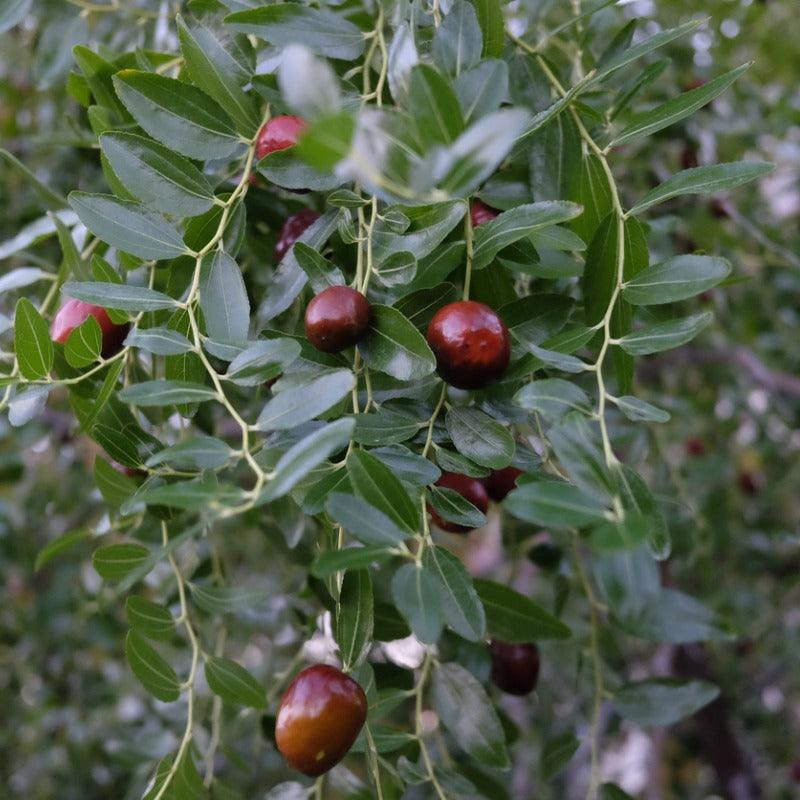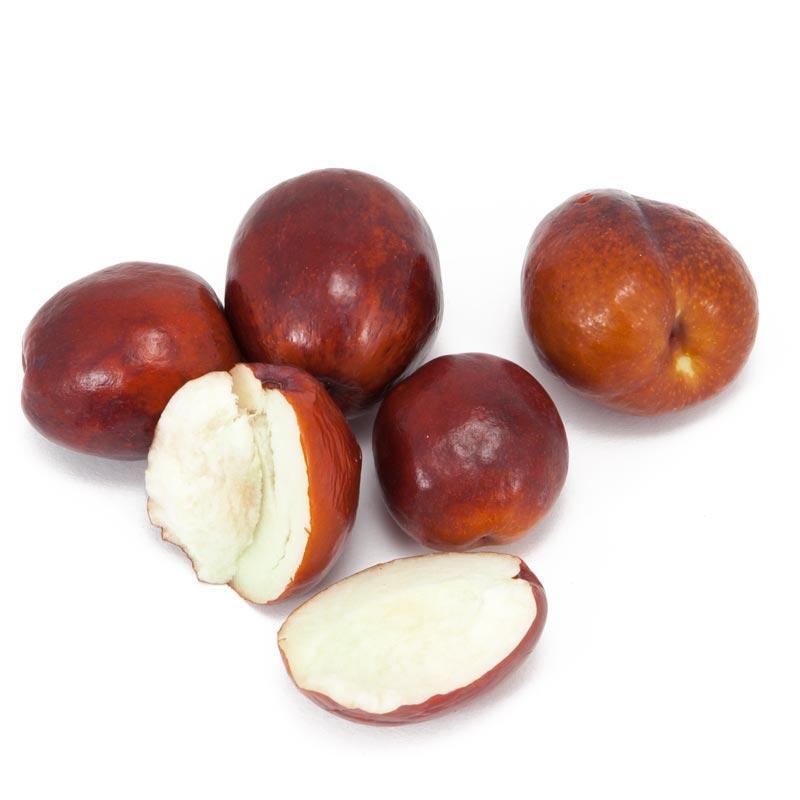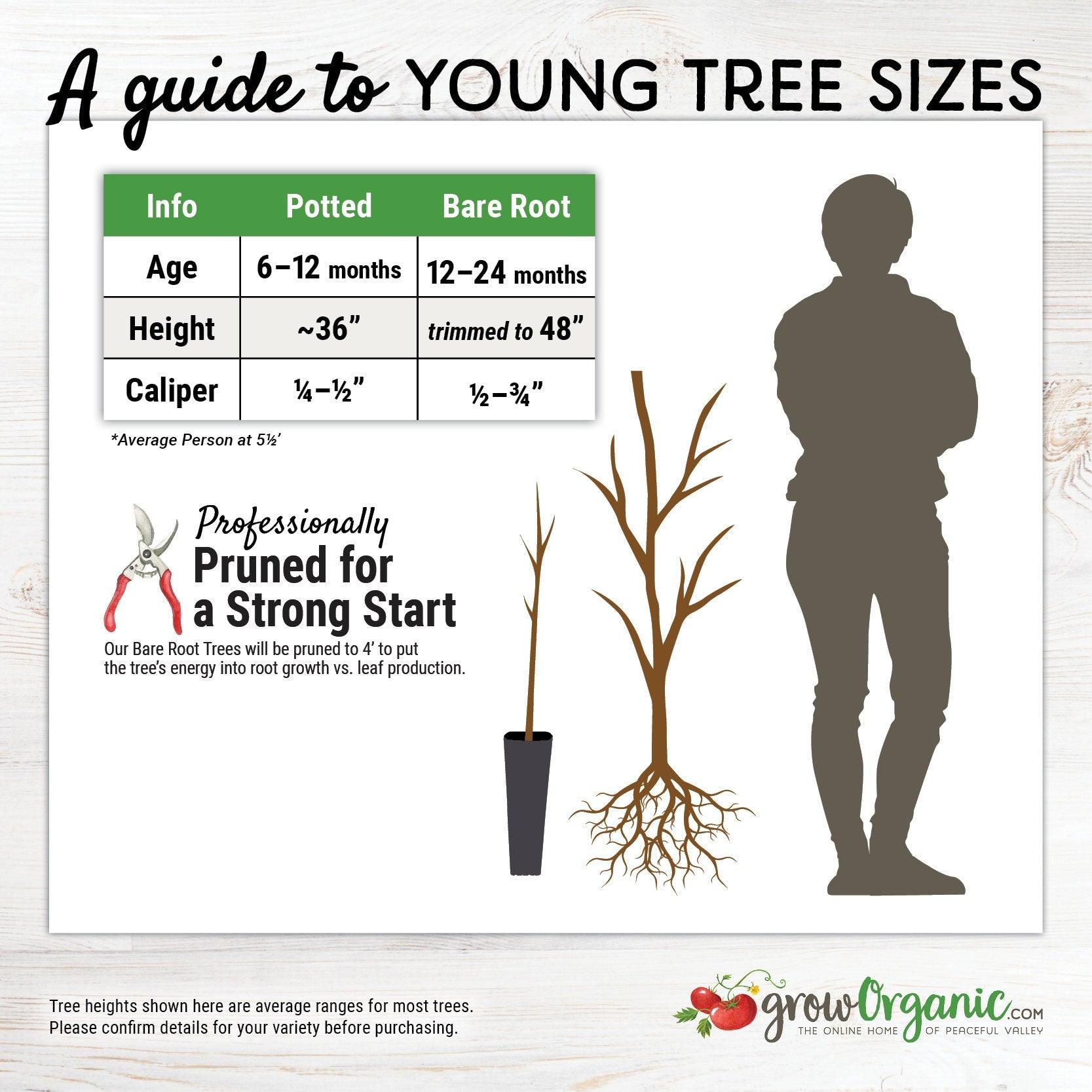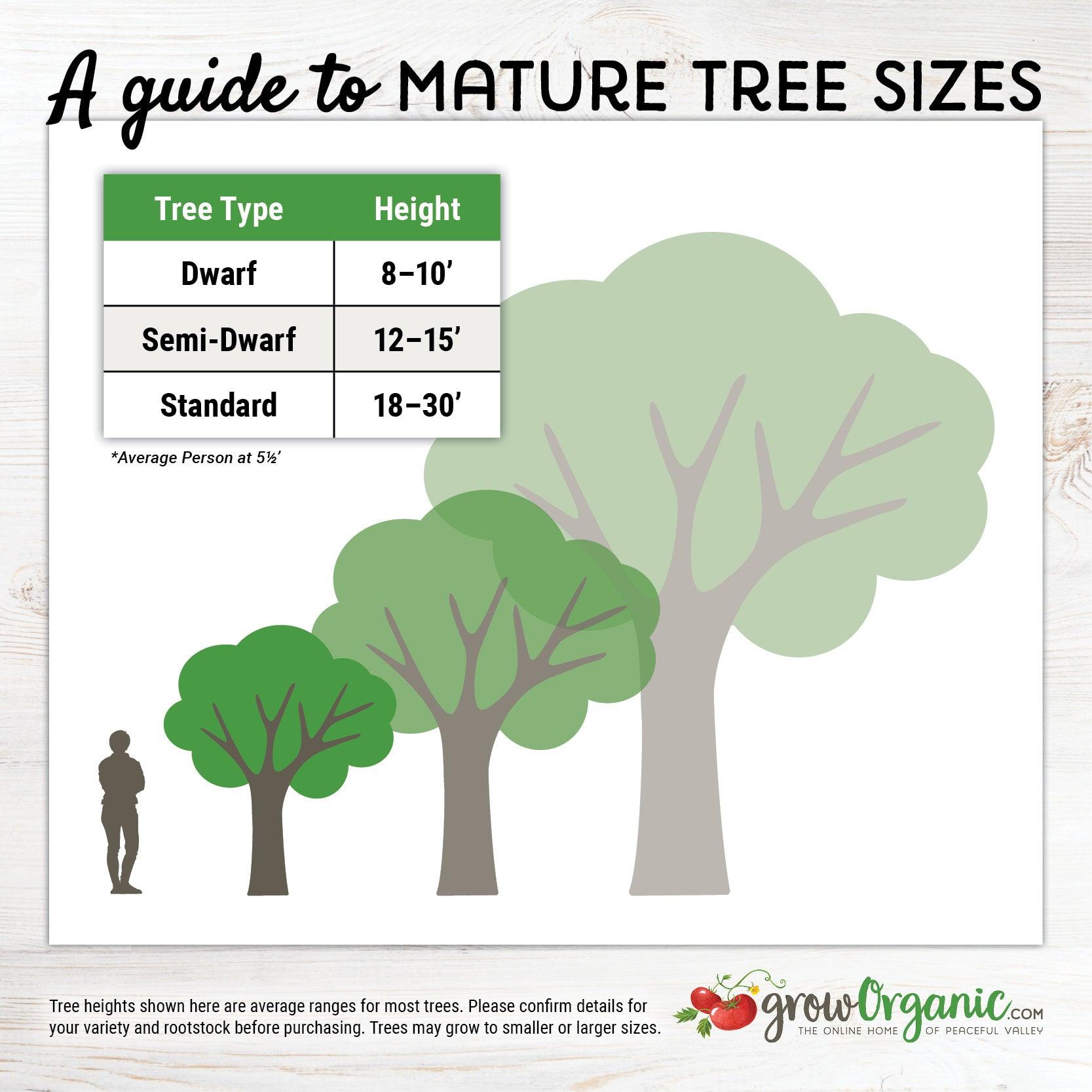Item Number: FT246
Li Jujube Tree
Sweet, crisp, and easy to grow
The Li Jujube Tree (Ziziphus jujuba ‘Li’) is one of the most sought-after jujube varieties for home orchards, thanks to its large, crisp fruit, dependable productivity, and remarkable adaptability. This deciduous fruit tree produces plump, round fruit that ripens from green to a deep reddish-brown—often called Chinese dates—with a refreshing crunch and mild honey flavor perfect for fresh eating, drying, or cooking.
A reliable producer that performs well in a wide range of climates, the li jujube tree is hardy, attractive, and exceptionally easy to grow, making it an excellent choice for new gardeners and experienced growers alike.
Why the Li Jujube Is a Top Jujube Variety
Sweet, Crisp & Full of Flavor
The li jujube taste is often compared to a crisp apple with hints of honey. As the jujube fruit dries, it becomes chewy, richer, and sweeter—similar to dates, which is why they are commonly called Chinese dates.
This versatile fruit works beautifully for:
- Snacking fresh from the tree
- Drying for long-term storage
- Baking and desserts
- Herbal teas and traditional recipes
A Productive, Attractive, Easy-to-Grow Tree
The Li Jujube is known as an attractive easy to grow tree with glossy green leaves, a graceful rounded form, and small fragrant blooms in late spring. Once established, it becomes drought-tolerant, pest-resistant, and extremely low maintenance.
Because it requires long hot summer conditions for best performance, it thrives in warm regions—but it is also hardy enough for cooler climates. The Li Jujube is suitable for many areas, including jujube tree zone 5 regions where winter temperatures drop summertime to 20°F during winter dormancy.
Tree Characteristics
Li Jujube Tree Size & Growth Habit
- Mature li jujube tree height: about 15–20 feet
- Spreading, rounded canopy
- Small, shiny leaves that create a lush, attractive appearance
- Strong fruiting on new fruiting wood
This structure makes it an excellent landscape tree that provides both beauty and food.
Fruit Description
- Large, round fruit
- Smooth, shiny skin that turns reddish-brown when ripe
- Crisp and juicy fresh; chewy and sweet when dried
- Rich flavor ideal for both fresh snacks and culinary use
Growing Requirements for Healthy Growth and Fruit
Growing Zones
The Li Jujube grows well in USDA zones 5–10, giving gardeners in many climates the chance to enjoy this ancient fruit. Not sure of your zone? Use our What Is My Growing Zone? tool.
Sunlight Needs
This tree must be planted in full sun to support vigorous growth and consistent fruit set. More sun means sweeter fruit.
Soil Requirements
Li Jujube trees tolerate many soil types—sandy, rocky, alkaline, and poor soils—but they absolutely require well-draining soil. Proper soil preparation with compost can help improve soil structure and water flow. Poor drainage is the most common cause of early decline in young jujube trees.
Temperature & Climate
- Thrives in warm, dry climates
- Performs well in drought once established
- Cold hardy enough for jujube tree zone 5
- Requires long hot summer weather for the best fruit quality
Watering
A newly planted tree needs deep, consistent watering until roots establish. After that, watering can be reduced because the Li Jujube becomes highly drought-tolerant.
Pruning
Prune in late winter to maintain shape, encourage new fruiting wood, and remove any root sucker growth. Proper pruning improves setting fruit and airflow.
Fertilizing
A balanced fertilizer in spring encourages steady growth without overstimulating leafy growth at the expense of fruit.
Li Jujube Pollination
The Li Jujube is self-fruitful, meaning it will produce well on its own. However, cross pollination with another jujube—such as Lang or Honey Jar—can improve crop size and uniformity.
Browse more varieties of jujube in our full jujube trees collection.
What Li Jujube Fruit Looks & Tastes Like
Appearance
- Round to slightly oblong
- Turns reddish-brown when ripe
- Wrinkles slightly when dried
Flavor & Texture
- Crunchy like an apple when fresh
- Chewy and candy-sweet once dried
- Mild honey notes that intensify with drying
This combination of textures makes li jujube fruit one of the most versatile jujube variety options for home growers.
Planting a Li Jujube Fruit Tree
How to Plant
- Plant in early spring while still dormant.
- Space trees 15–20 feet apart for good airflow.
- Dig a hole wider than the root ball.
- Plant the tree with the graft union above soil level.
- Water deeply after planting.
Care Tips for Long-Term Success
- Keep soil slightly moist during the first year.
- Mulch to retain moisture and suppress weeds.
- Prune annually for structure and fruiting strength.
- Avoid overwatering, especially in heavy soils.
For more guidance on tending orchard trees, visit our fruit trees learning center, or compare cultivars using our jujube characteristics chart.
Why the Li Jujube Tree Is a Garden Favorite
The li jujube fruit tree delivers consistent, high-quality yields, adapts to many growing conditions, and produces delicious, nutritious fruit that can be enjoyed in countless ways. Its durability, beauty, and flavor make it a perfect addition to home orchards, edible landscapes, and water-wise gardens.
Why Buy a Li Jujube Tree From Us
When you order a li jujube tree for sale or browse our li jujube trees for sale, you receive a premium, carefully grown bare-root tree that is ready to thrive. Our Chinese jujube li tree selections are known for strong root systems, reliable fruiting, and excellent adaptability.
You’ll enjoy:
- Healthy, well-developed trees
- Strong graft union for long-term structure
- Hardy, drought-tolerant stock
- Expert support for growing jujube successfully
Whether you're adding to an orchard or planting your first jujube, the jujube li tree offers sweet fruit, year-after-year reliability, and a connection to thousands of years of cultivation history.
For more information about different types of rootstocks and how they influence tree size and growth, see our Tree Rootstock Characteristics Chart.


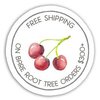
Check Your Zone Compatibility:
Compatible with your zone.
Growing Zone for

Our Guarantee To You
Since 1976, we've served our customers at every stage of growing. Please contact us at any time. We are happy to support and assist you.
Shipping Information
Shipping Information
Cannot ship to the following states: HI, AK, PR, GU, VI
Shipping Weight: 5.0 lb
Dimensions: 47.5"L x 7.3"W x 2.75"H
Features
Features
- Bare Root
- Self-fruitful
- Suited to Warmer Climates
Characteristics
Characteristics
Planting & Care
Planting & Care
Useful Information
Useful Information
Guarantee
Guarantee
Limited Dormant Tree & Plant Guarantee
* Claim deadline is June 15th
We guarantee that your dormant tree or plant will arrive in good, viable condition. If your tree arrives in substandard condition, notify us within 3 days of delivery. Please email pictures of the box, inside packaging, the tree and its roots to helpdesk@groworganic.com. We will investigate your claim and process a request to exchange or refund the damaged product.
If your dormant tree or plant has not grown new leaves by June 15th, you may be eligible for our Limited Dormant Tree & Plant Guarantee. This guarantee provides for a store credit for the purchase price of the tree, excluding shipping. Please see the Instructions below.
Important Dates:
- April 1st Dormant trees/plants must be planted in the ground
- May 15th Perform scratch test, if no new leaves have grown
- June 15th Deadline to apply for a dormant tree/plant credit
All required documentation must be received by June 15th for your claim to be considered. Claims or documentation received after June 15th will be denied, without exception. Instructions listed below
Terms and Conditions
We cannot guarantee that your tree or plant will remain alive and healthy after it is received, or bear fruit as there are too many variables in your environment that are beyond our control (i.e. soil preparation, weed and pest control, proper irrigation, chill hours, compatible hardiness for your growing zone, proper choice of pollinator, extreme weather, rodent damage, disease, etc.).
We cannot guarantee that we will be able to provide a replacement tree/plant of the same species either that same growing season or in future years. Customers are responsible for all shipping fees associated with replacement trees and plants.
If we determine that the tree you purchased directly from us is not viable, we will issue you a store credit (not a refund) for the purchase price of the affected dormant tree or plant. Shipping is not included in the dormant tree/plant guarantee. Store credits can be used to purchase any product we sell and are valid for use only until July 1st of the following year.
Historically, 98% of our dormant trees and plants grow and thrive when they have been cared for and planted using our growing guides. Dormant trees and plants must be planted in the ground by April 1st in order to be eligible for credit. If the ground in your area is still frozen solid, you may temporarily plant your tree or plant in a pot.
Potted, non-dormant trees or plants are excluded from this guarantee as they are not dormant at the time of shipment. Evergreen trees such as citrus, avocado and olive trees are not available for credit under the Dormant Tree and Plant Guarantee.
Instructions
We guarantee that your dormant fruit tree or plant will leaf out, if you care for it according to our growing guides. In the unlikely event that your dormant tree or plant does not have leaves by May 15th, follow these simple steps to apply for a store credit:
Before you call or email, please perform a “scratch test” to determine if the tree or plant is still alive. This video shows how to check for live tissue under the bark. Scratch tests need to be done a few inches above and below the graft.
Green Cambium Layer / Living Trees
If the cambium layer under the bark is green, give your tree a little more time. It is still alive, but hasn’t come out of dormancy yet. Check to make sure that it is getting the right amount of deep root water, enough sunlight and that the weather is warm enough for that type of tree/plant to come out of dormancy. Every tree has its own personality and will come out of dormancy at different times. Be sure to submit the required documentation listed below by June 15th, if it doesn’t grow leaves.
Brown Cambium Layer / Dead Trees
If the scratch test shows a brown cambium layer or if your dormant tree/plant doesn’t have leaves by June 1st, please email us at helpdesk@groworganic.com. All required documentation listed below must be received by June 15th for your claim to be considered. To be considered for the guarantee claim, all required documentation must be received by June 15th. Incomplete submissions will be denied.
Required Documentation
- Order number
- Name of dormant tree/plant and the quantity affected
- Photos of each tree or plant showing:
- The roots (tree or plant must be pulled out of the ground)
- The scratch test areas
- The entire tree/plant
We reserve the right to not issue credit for items that have already been replaced. We also reserve the right to require photographic evidence that the tree/plant was not killed by root rot, rodent or mechanical damage.
Share
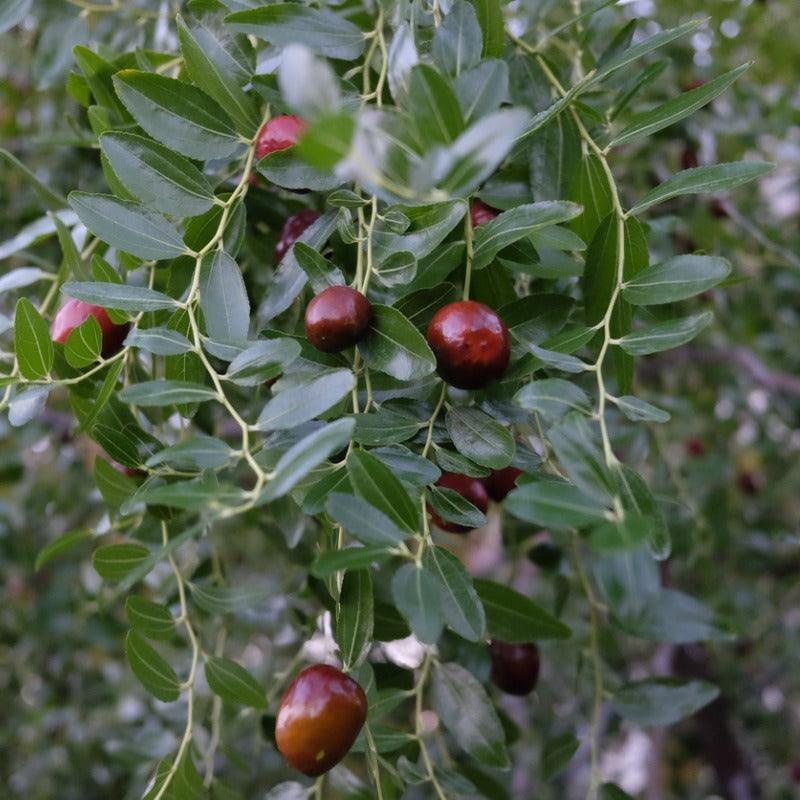
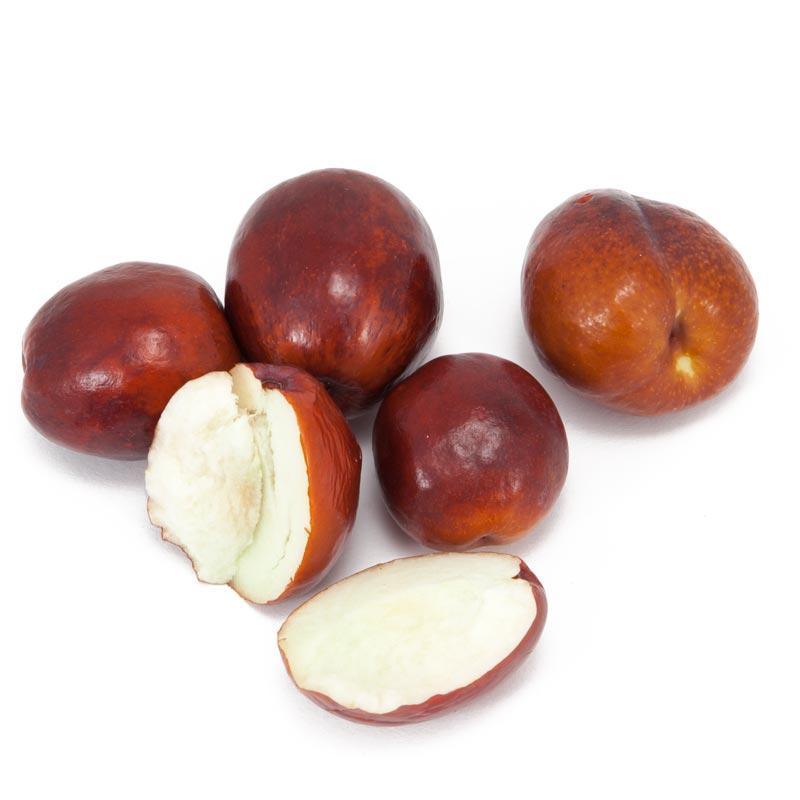
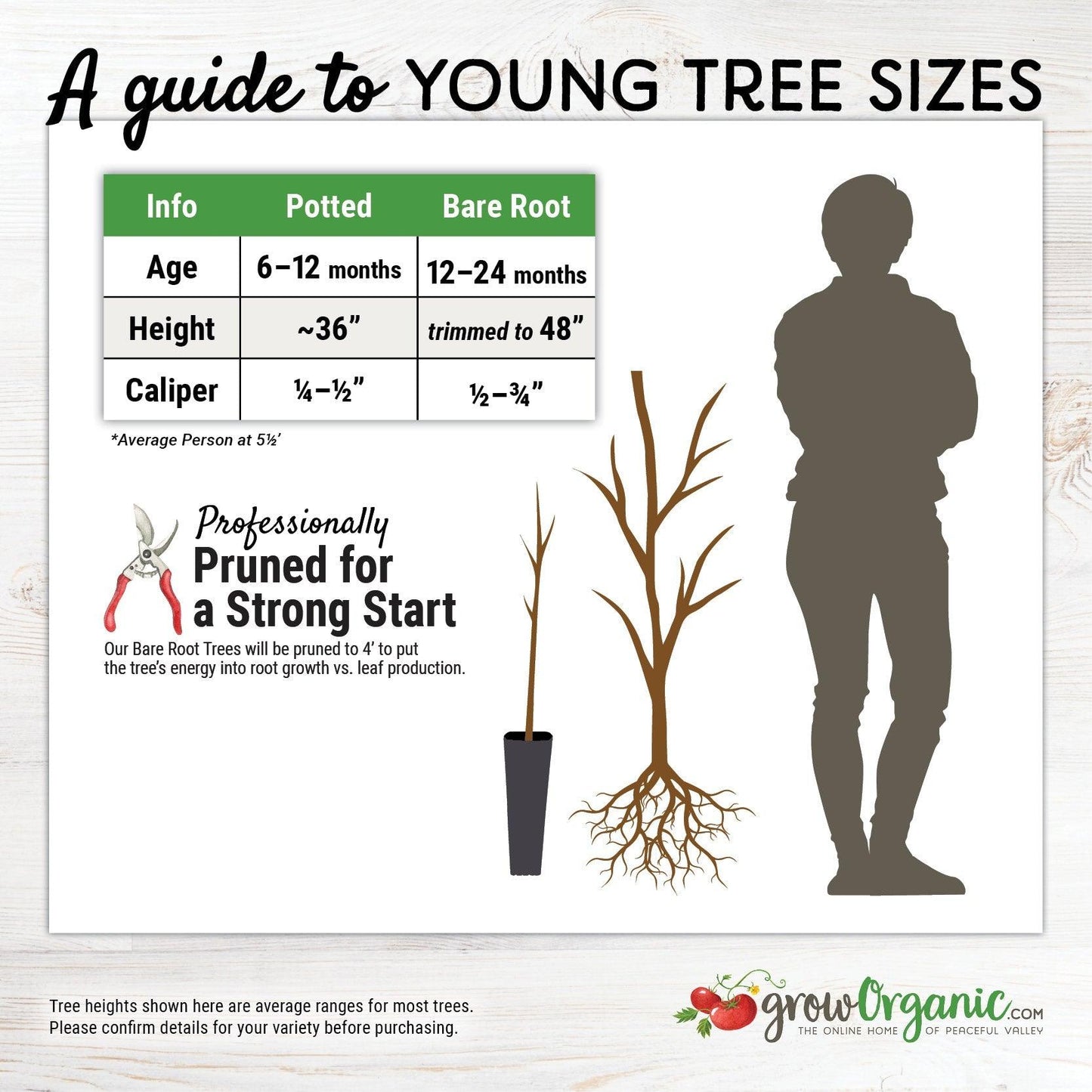
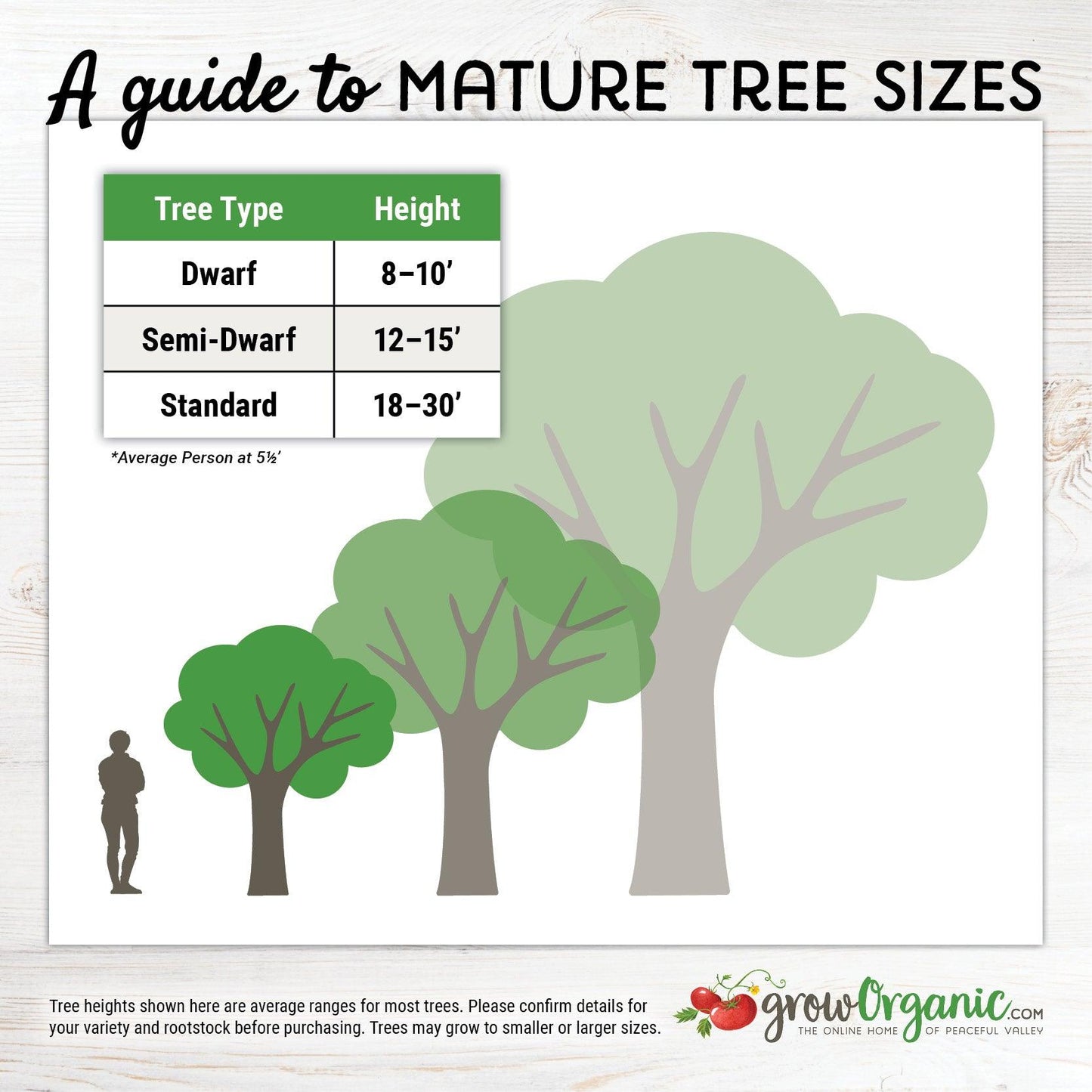
Very happy with the quality of the tree.
Stalk was about an inch in diameter. Dud not show signs of life when it arrived. Planted it the next day after soaking in water. With in a week it's alive! So far, so good.
More substantial than any other bare root trees I've tried. They are already growing out of the tree tubes. Very pleased.
Dates are so healthy, can't wait to have my own fresh ones!
one of the best bare root tree supplier , received 3/4" caliper tree this year, looking forward

